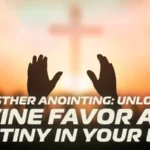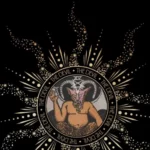Every year on March 17th, people around the world celebrate St. Patrick’s Day with parades, green attire, and festivities. Beyond the lively traditions and cheerful atmosphere, there lies a deeper spiritual significance to this widely celebrated holiday. St. Patrick’s Day is a time for reflection, connection, and exploration of the meaning behind the celebration. From its historical origins rooted in religious significance to the symbolism of the shamrock and the color green, this article delves into the spiritual aspects of St. Patrick’s Day and how it holds significance for individuals on their own personal journeys. Join us as we uncover the hidden layers of spirituality behind this festive occasion.
Contents
- History of St Patrick’s Day
- Religious Origins
- Spiritual Symbolism
- Rituals and Traditions
- Exploring Dreams and Visions
- Conclusion
-
Frequently Asked Questions
- What is the significance of St. Patrick’s Day?
- Who was St. Patrick?
- When is St. Patrick’s Day celebrated?
- Why is the color green associated with St. Patrick’s Day?
- What is the significance of the shamrock on St. Patrick’s Day?
- Why do people wear green on St. Patrick’s Day?
- Are there any religious rituals associated with St. Patrick’s Day?
- What is the significance of parades on St. Patrick’s Day?
- Can dreams or visions have spiritual significance on St. Patrick’s Day?
- Is St. Patrick’s Day only celebrated in Ireland?
- References
History of St Patrick’s Day
The history of St. Patrick’s Day traces back to the early 17th century, honoring the patron saint of Ireland, St. Patrick. St. Patrick was a Christian missionary who is believed to have brought Christianity to the people of Ireland. The holiday originally began as a religious feast day, observed on the anniversary of St. Patrick’s death, which is believed to be on March 17th, around the year 461. Over time, St. Patrick’s Day evolved into a celebration of Irish culture and heritage, both in Ireland and among Irish communities around the world. Today, it is a public holiday in Ireland and a day of festivities, parades, and green-themed celebrations in many other countries.
Religious Origins
St. Patrick’s Day has deep religious origins tied to the life and work of St. Patrick, the patron saint of Ireland. St. Patrick, born in Britain, was taken captive to Ireland as a young boy. During his years of captivity, he found solace and strength in his faith in Christianity. After escaping captivity and returning to Britain, St. Patrick had a vision where he heard the voice of God calling him to return to Ireland and spread the teachings of Christianity. He became a bishop and traveled extensively, converting the pagan Irish people to Christianity. St. Patrick’s Day, originally a religious feast day, is a celebration of St. Patrick’s life and his significant role in bringing Christianity to Ireland.
St Patrick and Christianity
St. Patrick, the namesake of St. Patrick’s Day, played a significant role in bringing Christianity to Ireland. Born in Roman Britain in the late 4th century, he was captured by Irish pirates as a teenager and taken to Ireland as a slave. During his time as a slave, Patrick turned to his faith for solace and began studying Christianity. After escaping from slavery, he had a vision which he believed was a message from God, calling him to return to Ireland as a missionary to spread the teachings of Christianity. Patrick spent years studying theology and eventually became a bishop. He dedicated his life to converting the people of Ireland to Christianity, using the shamrock to explain the concept of the Holy Trinity. He is credited with playing a significant role in the Christianization of Ireland and is now revered as the country’s patron saint.
Conversion of Ireland
- Conversion of Ireland: St. Patrick is famously known for his role in the conversion of Ireland to Christianity. Born in Roman Britain, he was captured by Irish raiders in his youth and brought to Ireland as a slave. During his captivity, he developed a deep faith in Christianity and managed to escape after six years. After returning to his homeland, he felt a calling to spread Christianity in Ireland. St. Patrick returned to Ireland as a missionary, preaching the gospel and establishing churches and monasteries throughout the country. His efforts were instrumental in the conversion of the Irish people to Christianity, marking a significant turning point in the history of Ireland.
Spiritual Symbolism
The spiritual symbolism associated with St. Patrick’s Day is rich and meaningful. One prominent symbol is the shamrock. According to legend, St. Patrick used the three-leaf shamrock to explain the concept of the Holy Trinity, representing the Father, Son, and Holy Spirit as one entity. This symbolizes unity and interconnectedness, reminding us of the divine presence in our lives. Another significant symbol is the color green. Green has long been associated with nature, growth, and renewal. Just as spring emerges during this time of year, green reminds us of the cycle of life and the constant potential for growth and transformation. It signifies hope, rebirth, and the awakening of the spirit.
The Shamrock and the Holy Trinity
The shamrock holds deep spiritual symbolism, particularly in relation to the Holy Trinity. According to Christian tradition, St. Patrick used the three leaves of the shamrock to explain the concept of the Trinity to the pagan Irish people. Each leaf represents a different aspect of the Trinity – the Father, the Son, and the Holy Spirit – which are three distinct entities yet part of the same divine essence. The shamrock serves as a visual representation of this complex theological concept, making it a powerful symbol of unity and interconnectedness. Even today, wearing or displaying a shamrock on St. Patrick’s Day is seen as a way to honor both the saint and the Holy Trinity.
The Color Green and Nature’s Renewal
- The color green is strongly associated with St. Patrick’s Day and holds significant spiritual symbolism. Green represents nature’s renewal and the arrival of spring, which aligns with the timing of the holiday in many parts of the world. As winter fades away and new life begins to bloom, the color green serves as a reminder of growth, rejuvenation, and the cycle of life. It is a symbol of hope and new beginnings, reflecting the spiritual aspect of St. Patrick’s Day. Additionally, green is also connected to the lush landscapes of Ireland, further enhancing its association with the holiday.
Rituals and Traditions
Rituals and traditions play a significant role in the celebration of St. Patrick’s Day. One popular tradition is wearing green clothing or accessories as a way to embrace Irish heritage and to symbolize protection against evil spirits. This tradition can be traced back to the belief that wearing green makes you invisible to leprechauns, mischievous mythical creatures. Another popular aspect of the celebration is the parades that take place in many cities, with the New York City St. Patrick’s Day Parade being one of the most famous. These parades showcase Irish culture, music, and dance, bringing communities together in a festive atmosphere. Additionally, people often gather to share traditional Irish meals and drinks, such as corned beef and cabbage or a pint of Guinness. These rituals and traditions contribute to the joy and camaraderie experienced on St. Patrick’s Day, making it a special occasion to partake in.
Wearing Green and Protecting Against Evil
One of the well-known traditions associated with St. Patrick’s Day is the custom of wearing green. Green has long been associated with Ireland, often referred to as the “Emerald Isle.” On St. Patrick’s Day, people wear green clothing, accessories, and even shamrock-shaped pins. This tradition began as a way to show solidarity with Ireland and its rich cultural heritage. Additionally, wearing green is believed to have protective elements. According to folklore, green acts as a shield against evil spirits and misfortune. So, by donning green attire on St. Patrick’s Day, individuals symbolically protect themselves from harm and invite good luck into their lives. It’s a belief that adds an extra layer of spirituality and symbolism to the festivities.
Parades and Celebrations
- Parades: St. Patrick’s Day parades are a highlight of the celebrations, attracting millions of spectators each year. These vibrant processions feature floats, marching bands, dancers, and participants dressed in green attire. Cities like Dublin, New York, and Chicago are known for their grand St. Patrick’s Day parades, which bring communities together to celebrate Irish culture and heritage.
- Green Celebrations: The color green has become strongly associated with St. Patrick’s Day, symbolizing Ireland and its lush landscapes. During the celebrations, buildings, landmarks, and even rivers are often illuminated in green lights. People also wear green clothing and accessories as a way to honor the holiday and show their Irish spirit.
- Music and Dance: Traditional Irish music and dance are central to St. Patrick’s Day celebrations. Live performances featuring lively jigs, reels, and traditional Irish instruments like the bodhrán and fiddle can be enjoyed at local festivals and gatherings. Many people also participate in Irish dancing, with step-dancers showcasing their skills in synchronized routines.
- Community Events: St. Patrick’s Day is an occasion for community events and gatherings. People come together to enjoy concerts, street fairs, and cultural exhibitions that showcase Irish traditions, art, and crafts. It’s a time to connect with others, learn about Irish heritage, and celebrate the spirit of St. Patrick’s Day.
Exploring Dreams and Visions
The celebration of St. Patrick’s Day also presents an opportunity for individuals to delve into the realm of dreams and visions, exploring the spiritual messages that may be hidden within. In Celtic mythology, dreams were seen as a window into another world, a place where the veil between the physical and spiritual realms was thin. Some believe that on St. Patrick’s Day, this connection is heightened, making it a favorable time to pay attention to the symbolism and messages that may appear in your dreams. These dreams could offer guidance, insight, or even a connection with ancestors who have passed on. By reflecting on and interpreting these dreams, individuals have the chance to gain a deeper understanding of themselves and the spiritual journey they are on. So, embrace the power of your dreams this St. Patrick’s Day and unlock the hidden wisdom they may hold within.
Potential Spiritual Messages
- Divine Guidance: Dreams and visions experienced on St. Patrick’s Day may hold potential spiritual messages. These messages can serve as guidance on our life’s path and offer insights into our present challenges or future endeavors.
- Personal Transformation: St. Patrick’s Day is a time when spiritual growth and transformation can occur. It provides an opportunity to reflect on our inner selves, release old patterns, and embrace new beginnings.
- Connecting with the Divine: Through meditation or prayer, individuals can use St. Patrick’s Day as a special occasion to deepen their connection with the divine presence. This can lead to a heightened sense of spirituality and a stronger bond with one’s higher self.
Connecting with Ancestors
Another spiritual aspect of St. Patrick’s Day is the opportunity for individuals to connect with their ancestors. For many people of Irish descent, St. Patrick’s Day holds a deep significance in terms of honoring their heritage and paying tribute to their ancestors. This connection with the past can be a powerful source of spirituality and can provide a sense of belonging and identity. Through various rituals and practices, such as visiting ancestral sites, researching family history, or simply taking a moment to reflect on the sacrifices and accomplishments of those who came before, individuals can establish a profound connection with their lineage and gain a greater understanding of their roots.
Conclusion
In conclusion, St. Patrick’s Day is not only a day of revelry and celebration, but it also holds a deep spiritual significance. The roots of this holiday can be traced back to the religious origins of honoring St. Patrick and the spread of Christianity in Ireland. The symbolism of the shamrock representing the Holy Trinity and the color green representing nature’s renewal adds a spiritual dimension to the festivities. Additionally, the rituals and traditions, such as wearing green and participating in parades, hold spiritual significance in warding off evil and embracing Irish culture. Moreover, St. Patrick’s Day provides an opportunity for individuals to explore dreams, visions, and connect with their ancestors, potentially receiving spiritual messages and guidance along their personal journeys. So, as you celebrate St. Patrick’s Day, take a moment to reflect on the deeper spiritual meaning behind the festivities and the connection to Irish heritage and spirituality.
Frequently Asked Questions
What is the significance of St. Patrick’s Day?
St. Patrick’s Day is significant as it commemorates the life and work of St. Patrick, the patron saint of Ireland. It is also a celebration of Irish culture and heritage.
Who was St. Patrick?
St. Patrick was a Christian missionary who is believed to have brought Christianity to Ireland in the 5th century. He is revered as the patron saint of Ireland.
When is St. Patrick’s Day celebrated?
St. Patrick’s Day is celebrated every year on March 17th, the traditional death date of St. Patrick.
Why is the color green associated with St. Patrick’s Day?
The color green is associated with St. Patrick’s Day because it is the color often associated with Ireland, also known as “The Emerald Isle.” It represents the lush landscape and symbolizes nature’s renewal.
What is the significance of the shamrock on St. Patrick’s Day?
The shamrock holds great significance as it is believed that St. Patrick used it to explain the concept of the Holy Trinity – the Father, the Son, and the Holy Spirit – to the people of Ireland.
Why do people wear green on St. Patrick’s Day?
Wearing green on St. Patrick’s Day is a way to show solidarity with Ireland, as well as a way to ward off evil spirits. It is a tradition that dates back to ancient folklore.
Are there any religious rituals associated with St. Patrick’s Day?
While St. Patrick’s Day has become a more secular celebration, there are still religious rituals associated with the holiday. These may include attending Mass or participating in prayer services.
What is the significance of parades on St. Patrick’s Day?
Parades have become a central part of St. Patrick’s Day celebrations, particularly in countries with large Irish communities. They are a way to showcase Irish culture, music, and dance, while also fostering a sense of community and pride.
Can dreams or visions have spiritual significance on St. Patrick’s Day?
Some people believe that dreams and visions experienced on St. Patrick’s Day may hold spiritual significance. It is seen as a time when the veil between the physical and spiritual worlds is thinner, allowing for deeper connections and messages to come through.
Is St. Patrick’s Day only celebrated in Ireland?
No, St. Patrick’s Day is celebrated around the world, particularly in countries with Irish diasporas. It has become a global celebration of Irish culture and heritage.







